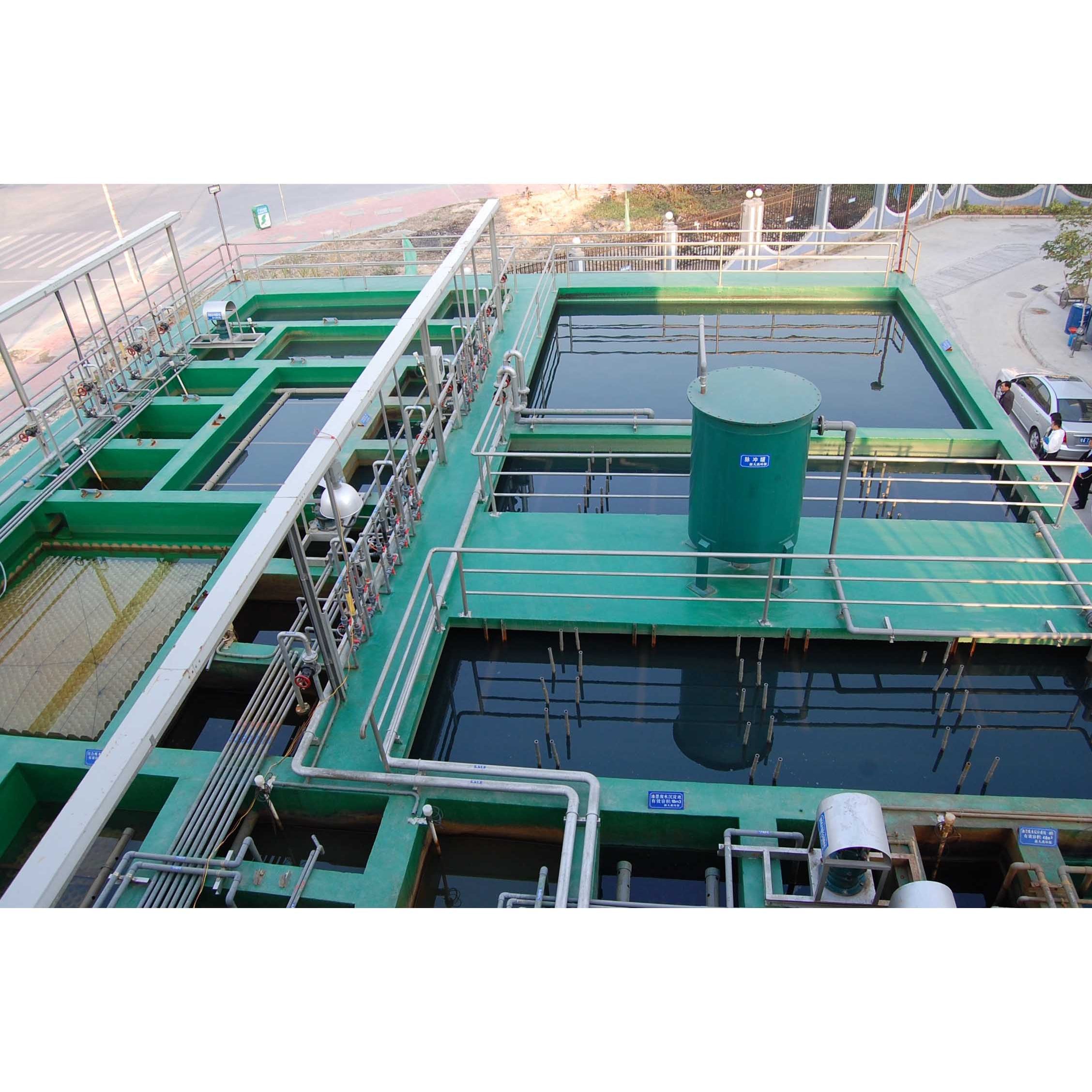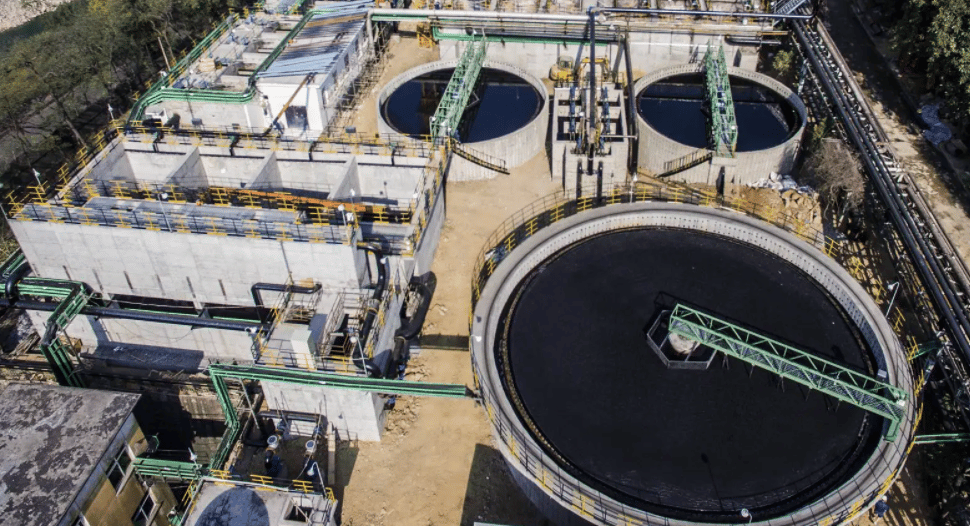Industrial Waste Water Treatment-- Customized Solutions for Effective Wastewater Treatment
Industrial Waste Water Treatment-- Customized Solutions for Effective Wastewater Treatment
Blog Article
Developments and Developments in Industrial Waste Water Therapy Technologies
The landscape of commercial wastewater treatment is going through a transformative change, driven by advancements that improve both performance and sustainability. As regulatory requirements develop, the assimilation of AI and equipment understanding right into wastewater management systems assures to simplify procedures and ensure conformity.
Introduction of Waste Water Treatment Technologies
Wastewater therapy modern technologies encompass a variety of approaches developed to get rid of impurities from industrial effluents prior to their release right into the environment. These innovations are critical for preserving ecological equilibrium and guaranteeing compliance with environmental guidelines. The primary categories of wastewater treatment include physical, chemical, and biological techniques, each serving distinct objectives based on the nature of the pollutants existing.

Biological therapy methods use bacteria to break down natural matter, making them especially reliable for organic-rich effluents. Methods like turned on sludge and biofilm activators harness the all-natural destruction capabilities of bacteria, bring about significant decreases in biochemical oxygen demand (FIGURE)
Advanced Filtration Methods
Advanced filtration techniques stand for an important evolution in the world of commercial wastewater treatment, improving the efficiency of contaminant removal processes. Industrial Waste Water Treatment. These techniques include an array of technologies, consisting of microfiltration, ultrafiltration, nanofiltration, and turn around osmosis, which give consecutive obstacles for various fragment dimensions and chemical structures
Microfiltration and ultrafiltration make use of membrane layer systems to get rid of suspended solids, germs, and bigger natural particles, enhancing the top quality of effluent before more therapy. Nanofiltration links the void in between ultrafiltration and turn around osmosis, efficiently removing divalent ions and organic substances, therefore lowering the lots on downstream procedures.
Reverse osmosis provides the highest degree of purification by allowing just water and tiny molecules to go through its semi-permeable membrane layers, making it ideal for reclaiming top quality water from commercial effluents. Recent innovations in membrane layer technology, including the growth of more durable and fouling-resistant products, have significantly enhanced operational effectiveness and decreased costs.
Incorporating these advanced purification methods not only improves the total therapy process yet additionally adds to sustainability efforts by making it possible for water reuse and source recuperation in commercial setups. (Industrial Waste Water Treatment)
Organic Treatment Technologies

In addition, the development of crafted biological systems, such as membrane layer bioreactors (MBRs), incorporates organic treatment with innovative membrane filtering. This integration permits for greater effluent quality and reduced impact, making it appropriate for space-constrained commercial centers. Innovations in genetically crafted microbes have additionally emerged, boosting the biodegradation of details pollutants, such as pharmaceuticals and hefty steels, that are traditionally challenging to eliminate.
Additionally, the execution of bioaugmentation strategies, where advantageous microorganisms are introduced to improve the existing biological treatment procedures, has revealed promising lead to boosting therapy performance. These learn this here now innovations collectively symbolize a trend towards even more reliable and sustainable organic therapy approaches that can adjust to the developing intricacies of industrial wastewater streams. As industries proceed to prioritize ecological compliance, these organic innovations will play a critical function in wastewater management.

Resource Healing Approaches
In commercial setups, the assimilation of resource healing techniques has become increasingly important for enhancing sustainability and lessening waste. These approaches concentrate on removing beneficial products and power from wastewater streams, therefore changing potential contaminants into recyclable sources.
One noticeable approach is nutrition recuperation, where nitrogen and phosphorus, commonly existing in excess in wastewater, are recorded and converted into fertilizers. This not only minimizes ecological influences yet additionally provides a circular economic situation solution for farming applications. In addition, technologies such as anaerobic food digestion enable for the conversion of organic waste right into biogas, a renewable resource resource that can counter nonrenewable fuel source usage in commercial operations.
Moreover, progressed filtration and membrane layer technologies promote the healing of industrial by-products such as salts and steels. These recuperated products can be rehabilitated into production processes, decreasing the need for virgin sources.
Future Patterns in Drainage Administration
As sectors increasingly focus on sustainability, the future of wastewater administration is readied to undergo significant changes. Technological improvements, such as expert system and device learning, will certainly make it possible for extra effective monitoring and administration of wastewater systems. These modern technologies can anticipate maintenance requirements, enhance treatment processes, and enhance decision-making, ultimately reducing operational expenses and environmental influence.
Additionally, the combination of round economic climate concepts will certainly play an important role in wastewater administration. Industries are expected to shift in the direction of systems that not only deal with wastewater but additionally recuperate beneficial resources, such as nutrients, water, and power. This change will lessen waste and advertise the reuse of materials, lining up with international sustainability objectives.
Arising therapy strategies, such as membrane layer bioreactors and progressed oxidation processes, will certainly better boost the effectiveness of wastewater treatment, enabling greater high quality effluents suitable for reuse. In addition, regulative frameworks are likely to evolve, emphasizing more stringent criteria for wastewater discharge and motivating industries to adopt cutting-edge therapy options.
Verdict
In conclusion, the advancement of industrial wastewater treatment innovations shows a considerable shift in the direction of enhanced Get More Info performance and sustainability. Developments in advanced purification techniques, biological therapies, and resource recuperation approaches highlight the market's dedication to ecological stewardship. The assimilation of expert system and artificial intelligence additionally maximizes these processes, ensuring regulatory compliance and advertising a circular economic climate. Continued advancements in these areas will certainly play an essential role fit the future of wastewater administration and securing vital water resources.
The landscape of commercial wastewater therapy is undertaking a transformative shift, driven by innovations that improve both efficiency and sustainability.Wastewater therapy innovations include a range of techniques designed to remove contaminants from commercial effluents before their launch into the environment.Taking advantage of the power of organic procedures has led to considerable developments in the therapy of industrial wastewater.Additionally, the implementation of bioaugmentation strategies, where helpful germs are presented to improve the existing biological treatment procedures, has actually shown encouraging outcomes in enhancing treatment efficiency. These technologies jointly represent a pattern in the direction of even more sustainable and effective biological treatment methods that can adjust to the developing complexities of commercial wastewater streams.
Report this page